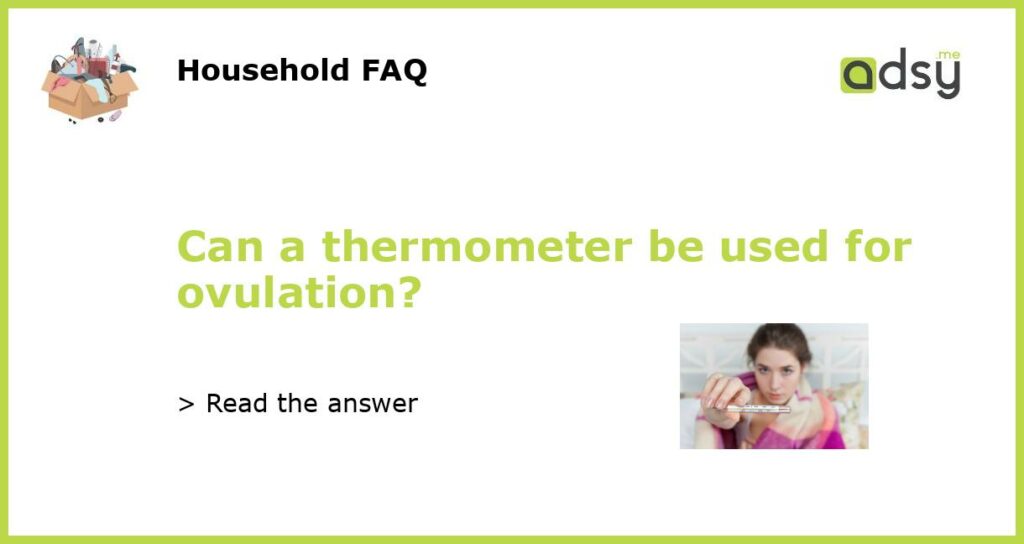Using a Thermometer for Ovulation: An Overview
Tracking ovulation is essential for couples trying to conceive and for women who want to understand their menstrual cycle better. While there are various methods available, one question that often arises is whether a thermometer can be used for tracking ovulation. In this article, we will explore whether a thermometer can indeed be used for ovulation tracking and the effectiveness of this method.
Basal Body Temperature Method: Using a Thermometer for Tracking Ovulation
The Basal Body Temperature (BBT) method involves measuring your body temperature every morning before getting out of bed. This method relies on the fact that a woman’s body temperature tends to rise after ovulation due to increased levels of progesterone. By tracking daily temperature changes, it is possible to identify when ovulation occurs.
To use a thermometer for ovulation tracking using the BBT method, you will need a special type of thermometer called a basal thermometer. This thermometer measures temperature more accurately than a regular thermometer.
Steps to follow when using a basal thermometer for ovulation tracking:
- Keep the basal thermometer within arm’s reach of your bed.
- Take your temperature at the same time every morning, before getting out of bed or engaging in any activity.
- Record your temperature on a fertility chart or an app specifically designed for tracking ovulation.
- Look for a consistent rise in temperature of approximately 0.4 to 1.0 degrees Fahrenheit (0.2 to 0.5 degrees Celsius) compared to previous days. This temperature increase indicates that ovulation has already occurred.
The Effectiveness of Using a Thermometer for Ovulation Tracking
While using a thermometer for tracking ovulation can be effective for some women, it may not be as reliable as other methods such as ovulation predictor kits or tracking cervical mucus changes. The BBT method relies on retrospective measurements, meaning that you can only confirm ovulation after it has already occurred, making it less useful for timing intercourse accurately.
Additionally, factors like interrupted sleep, illness, alcohol consumption, and stress can impact your basal body temperature and make it less accurate for ovulation tracking. Furthermore, the basal body temperature method alone cannot predict the exact day of ovulation, as the temperature rise occurs after ovulation has already taken place.
Tracking Ovulation – Other Methods to Consider
If you are looking for more accurate and reliable methods of tracking ovulation, you may want to consider the following:
- Ovulation Predictor Kits (OPKs): These kits detect the surge in luteinizing hormone (LH) that occurs 24 to 36 hours before ovulation. OPKs are easy to use and can provide a more accurate prediction of when ovulation is about to happen.
- Cervical Mucus Tracking: Monitoring changes in cervical mucus consistency and color can provide valuable insights into fertility. As ovulation approaches, cervical mucus becomes clearer, more slippery, and more stretchy.
- Tracking Menstrual Cycle Regularity: By keeping track of the length of your menstrual cycle over several months, you can estimate when ovulation might occur. This method is not as precise as others, but it can be useful in conjunction with other tracking methods.
Final Thoughts: Using a Thermometer for Ovulation
While using a thermometer for ovulation tracking using the BBT method can be informative and provide insights into your menstrual cycle, it may not be the most reliable method for accurately predicting ovulation. The retrospective nature of the BBT method means that it can only confirm ovulation after it has occurred. Consider combining the BBT method with other methods such as ovulation predictor kits or cervical mucus tracking to increase your chances of accurately predicting ovulation and optimizing your chances of conception.






